
Progress in Electromagnetics Research Letters
Scope & Guideline
Fostering Excellence in Electromagnetic Research
Introduction
Aims and Scopes
- Antenna Design and Optimization:
Research in this area includes the development of novel antenna structures, reconfigurable antennas, and antennas for specific applications such as 5G, IoT, and wireless communications. - Microwave and Millimeter-Wave Technologies:
The journal publishes studies related to microwave devices, filters, waveguides, and systems that operate at microwave and millimeter-wave frequencies, focusing on innovations in design and performance. - Electromagnetic Compatibility (EMC) and Safety:
This scope includes investigations into electromagnetic interference (EMI) and electromagnetic compatibility (EMC) issues, ensuring that devices operate without disrupting each other or causing safety hazards. - Metamaterials and Metasurfaces:
The journal features research on the design and application of metamaterials and metasurfaces to manipulate electromagnetic waves in innovative ways, enabling novel functionalities in devices. - Wireless Power Transfer (WPT) Systems:
Studies in this area focus on advancements in wireless power transfer technologies, including system designs, efficiency improvements, and applications in various sectors. - Computational Electromagnetics:
The journal publishes research that employs computational techniques for solving complex electromagnetic problems, including simulations and modeling methodologies.
Trending and Emerging
- 5G and Beyond Wireless Communication Technologies:
There is a significant increase in research related to antennas and systems designed for 5G and future wireless communication networks, highlighting the industry's push for higher data rates and improved connectivity. - Reconfigurable and Intelligent Surfaces:
Emerging studies on reconfigurable intelligent surfaces (RIS) are gaining traction, focusing on their application in enhancing wireless communication through advanced signal processing and beamforming techniques. - Integration of Electromagnetics with Artificial Intelligence:
An increasing number of papers explore the integration of AI and machine learning with electromagnetic design and analysis, aiming to optimize antenna performance and enhance predictive modeling capabilities. - Wearable and Flexible Electronics:
Research on antennas and devices that can be integrated into wearable technology and flexible electronics is on the rise, driven by the demand for innovative applications in health monitoring and smart textiles. - Sustainable and Green Technologies:
There is a growing interest in developing environmentally friendly materials and energy-efficient devices, particularly in wireless power transfer and energy harvesting technologies.
Declining or Waning
- Traditional Low-Frequency Applications:
Research related to traditional low-frequency electromagnetic applications has decreased, likely due to a shift towards higher frequency technologies such as 5G and beyond, which are more relevant in current communications technology. - Basic Theoretical Studies:
There has been a noticeable decline in purely theoretical studies that do not have direct applications or experimental validation, as the journal increasingly emphasizes practical, applied research. - Conventional Antenna Designs:
Research on conventional antenna designs without innovative modifications or applications has waned, as the field moves towards more advanced, multifunctional, and compact antenna systems. - Electromagnetic Shielding Techniques:
While still relevant, the frequency of studies specifically focused on basic electromagnetic shielding techniques has dropped, possibly due to advancements in materials and integrated solutions that address shielding in more complex environments.
Similar Journals
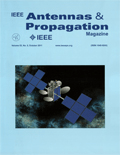
IEEE ANTENNAS AND PROPAGATION MAGAZINE
Shaping the Future of Antennas and Wave PropagationIEEE Antennas and Propagation Magazine, published by the IEEE Institute of Electrical and Electronics Engineers Inc, is a prestigious journal renowned for its impactful contributions to the fields of Condensed Matter Physics and Electrical and Electronic Engineering. With an impressive 2023 impact factor, this journal holds significant rankings as part of the Q1 quartile in both fields, reflecting its rigorous peer-review process and the high quality of published research. Spanning from 1990 to 2024, it features a wide range of articles including theoretical research, comprehensive reviews, and practical applications in antenna design and propagation. Though it does not offer open access, the magazine remains a vital resource for researchers, professionals, and students seeking cutting-edge insights and advancements in electromagnetic theory and related technologies. Located in the United States, IEEE Antennas and Propagation Magazine is dedicated to fostering innovation and collaboration within the global scientific community, showcasing essential studies that advance the understanding of wave propagation and antenna technology.
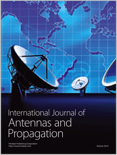
International Journal of Antennas and Propagation
Empowering researchers through open access knowledge.The International Journal of Antennas and Propagation, published by HINDAWI LTD, serves as a vital resource in the field of Electrical and Electronic Engineering, focusing specifically on advancements in antenna technology and propagation mechanisms. With an impact factor that reflects its academic rigor and relevance, this Open Access journal has been inviting submissions since 2007, ensuring that groundbreaking research is accessible to a global audience. Based in Egypt and distributed worldwide, the journal ranks in the Q3 category for Electrical and Electronic Engineering, situating it among the notable platforms for researchers seeking to disseminate their findings or stay abreast of the latest developments. It encompasses a wide scope, welcoming contributions that span theoretical studies, design innovations, and experimental validations, thereby fostering a comprehensive understanding of the subject. As it converges through the years from 2010 to 2024, the International Journal of Antennas and Propagation is a cornerstone for both emerging scholars and seasoned professionals aiming to enhance their knowledge and contribute to this dynamic field.
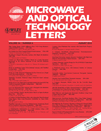
MICROWAVE AND OPTICAL TECHNOLOGY LETTERS
Unveiling Breakthroughs in Microwave and Optical EngineeringMicrowave and Optical Technology Letters is a prestigious journal published by Wiley that serves as a vital platform for disseminating cutting-edge research in the fields of microwave and optical technology. Established in 1988, this journal has built a reputable presence, with its scope encompassing critical areas such as atomic and molecular physics, condensed matter physics, and electrical and electronic engineering. With a notable ranking in the Q3 quartile across multiple scientific categories, Microwave and Optical Technology Letters provides researchers, professionals, and students an invaluable resource to stay informed about the latest advancements and applications in these dynamic disciplines. Although the journal is not open access, its rigorous peer-review process ensures the highest quality of published content, contributing to an enriched academic dialogue. Researchers looking to enhance their knowledge in electronic, optical, and magnetic materials will find this journal particularly beneficial. For more information, please visit Wiley's official website or subscribe to stay updated on the latest volumes.
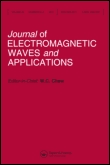
JOURNAL OF ELECTROMAGNETIC WAVES AND APPLICATIONS
Fostering Collaboration in Electromagnetic ResearchJournal of Electromagnetic Waves and Applications, published by Taylor & Francis Ltd, is a prestigious interdisciplinary journal that focuses on the rapidly evolving fields of electromagnetic waves and their applications. Since its inception in 1987, this journal has served as a vital resource for researchers, practitioners, and students interested in the latest advancements in electrical and electronic engineering, as well as materials science. The journal holds a respectable Q3 ranking in Electrical and Electronic Engineering and Electronic, Optical, and Magnetic Materials, and Q2 in Physics and Astronomy according to the 2023 category quartiles. With a dedicated readership, it aims to publish high-quality research articles that foster innovation and knowledge sharing among the scientific community. Despite not being open access, the journal ensures widespread availability of its insightful content aimed at pushing the boundaries of knowledge in the electromagnetic spectrum. As a crucial platform for disseminating cutting-edge research, the Journal of Electromagnetic Waves and Applications continues to contribute significantly to the advancement of technology and materials science.
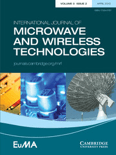
International Journal of Microwave and Wireless Technologies
Fostering Collaboration in Wireless Communication Research.International Journal of Microwave and Wireless Technologies is a leading academic journal published by Cambridge University Press, dedicated to the advancement of knowledge in the fields of microwave and wireless technologies. Since its inception in 2009, this journal has established itself as a crucial platform for researchers, professionals, and students involved in Electrical and Electronic Engineering, currently positioned in the Q3 quartile as per the 2023 category rankings. With an ISSN of 1759-0787 and an E-ISSN of 1759-0795, it facilitates the dissemination of high-quality research articles that address emerging trends and challenges in microwave and wireless communications. The journal is committed to fostering innovation and collaboration within the global scientific community, aiming to publish significant contributions that appeal to both academic and industrial perspectives. Its Scopus ranking of 382 out of 797 highlights its relevance and impact in the engineering domain. While currently not an open-access journal, it provides various access options for its readership, ensuring that cutting-edge research remains accessible to all.

IEEE Open Journal of Antennas and Propagation
Unlocking the potential of electromagnetic advancements.IEEE Open Journal of Antennas and Propagation, published by the renowned IEEE-INST ELECTRICAL ELECTRONICS ENGINEERS INC, stands at the forefront of research in the field of antennas and propagation since its inception in 2020. With an impressive Q1 ranking in Electrical and Electronic Engineering and a current Scopus percentile ranking placing it in the top 25% of its category, this journal not only fosters innovative studies but also serves as a critical resource for researchers, professionals, and students alike. As an Open Access journal, it amplifies the accessibility of cutting-edge research and encourages the widespread dissemination of knowledge. This journal's scope encompasses a broad array of topics within antenna design and propagation theory, making it an essential platform for advancing the academic and practical applications in these domains. The dedicated focus on converged technologies from 2020 to 2024 propels the journal into the future of electromagnetic research and fosters collaborative discourse among experts in the field.

MICROWAVE JOURNAL
Empowering Engineers with Essential ResearchMicrowave Journal, published by Horizon House Publications Inc, is a well-established platform in the field of Electrical and Electronic Engineering, specifically focusing on the advancements and applications of microwave technology. Since its inception in 1969, the journal has consistently delivered high-quality research, making it an invaluable resource for professionals, researchers, and students alike. Despite its Q4 ranking in Scopus for 2023, the journal plays a crucial role in disseminating knowledge and fostering innovation within its niche, showcasing developments across various areas including microwave systems, components, and applications. Although it does not offer Open Access, the journal’s comprehensive insights and peer-reviewed articles are essential for anyone looking to deepen their understanding of microwave engineering. By maintaining a rigorous editorial standard, Microwave Journal continues to shape the discussion and evolution of microwave technology.
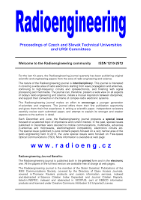
Radioengineering
Exploring the latest breakthroughs in wireless communication.Radioengineering is a prominent academic journal published by SPOLECNOST PRO RADIOELEKTRONICKE INZENYRSTVI, focusing on the fields of electrical and electronic engineering. Established in 1992, this open access journal aims to disseminate high-quality research and innovative developments in radioengineering and related disciplines. With an inclusive readership from around the world, it has been integral in fostering advancements in technologies such as wireless communication, signal processing, and electromagnetic theory. The journal's commitment to accessibility is underscored by its open access policy, allowing scholars and practitioners to freely engage with the latest findings. As of 2023, *Radioengineering* holds a Q3 quartile ranking in its field with a Scopus rank of #500/797, placing it within the 37th percentile among its peers. Researchers, professionals, and students engaged in electrical and electronic engineering will find *Radioengineering* an essential resource for both theoretical insights and practical applications. For further information, submissions, and access to articles, please visit the journal’s site linked through the CZECH TECHNICAL UNIVERSITY, located in Prague, Czech Republic.

Advances in Radio Science
Accelerating Discoveries in Radio TechnologyAdvances in Radio Science, published by COPERNICUS GESELLSCHAFT MBH, is a leading open-access journal established in 2003, dedicated to the rapid dissemination of high-quality research in the field of radio science, particularly focusing on advancements in electrical and electronic engineering. With an ISSN of 1684-9965 and an E-ISSN of 1684-9973, this journal is indexed and provides an avenue for researchers to contribute to the latest developments and innovations within the domain. Despite its current Q4 ranking in the Electrical and Electronic Engineering category, its commitment to open access ensures that all published articles are freely available to a global audience, fostering collaboration and knowledge sharing among engineers, researchers, and students alike. Situated in Göttingen, Germany, the journal continues to evolve and expand its reach, with content converging until 2024, emphasizing its relevance in a rapidly changing technological landscape. Whether you're a seasoned researcher or an emerging scholar, Advances in Radio Science invites you to explore the frontiers of radio science and contribute to its growing body of knowledge.

Journal of Electromagnetic Engineering and Science
Illuminating the Future of Electromagnetic EngineeringThe Journal of Electromagnetic Engineering and Science (ISSN: 2671-7255, E-ISSN: 2671-7263) is a premier Open Access journal published by the Korean Institute of Electromagnetic Engineering & Science. Since its establishment in 2001, it has been dedicated to advancing knowledge in the fields of Electrical Engineering, Electromagnetic Theory, and Communications, making significant contributions to both academia and industry. The journal holds an impressive Q2 quartile ranking in notable categories such as Computer Networks and Communications and Electrical and Electronic Engineering as of 2023, reflecting its robust scientific impact and reputation. It is indexed in Scopus, with commendable rankings in multiple fields, enhancing its visibility and reach among researchers. The journal's open-access model ensures that cutting-edge research is accessible to a global audience, fostering collaboration and innovation. Researchers, professionals, and students in the domain are encouraged to contribute and engage with high-quality articles that cover the latest advancements and trends in electromagnetic engineering and associated sciences.